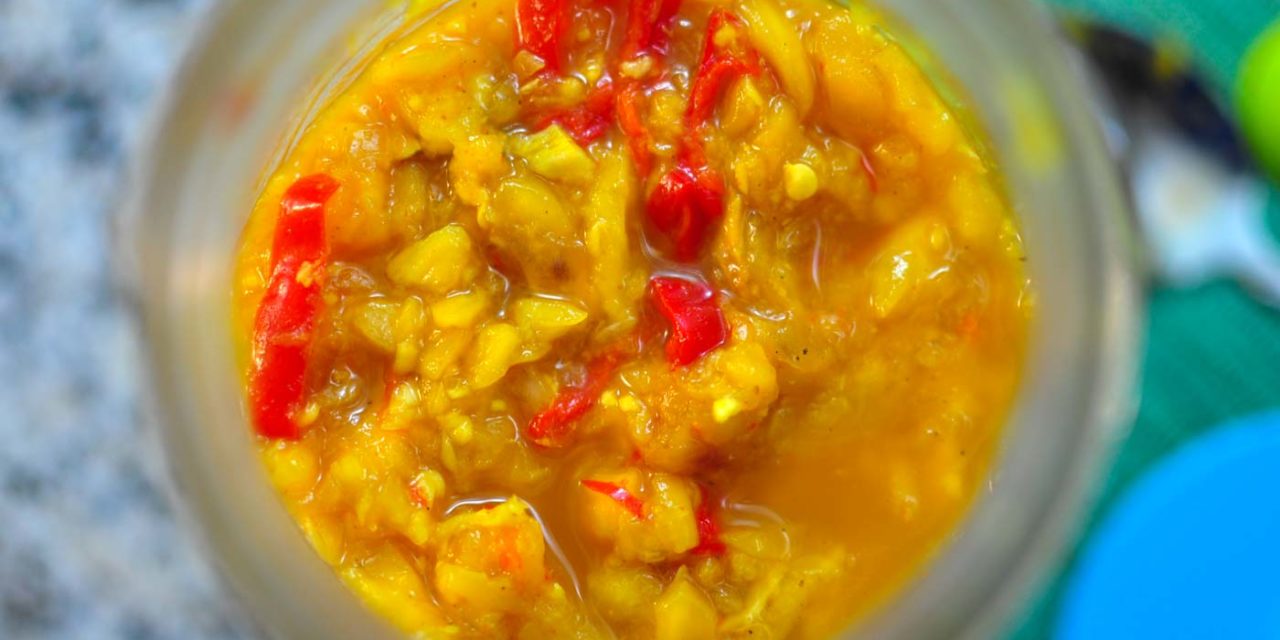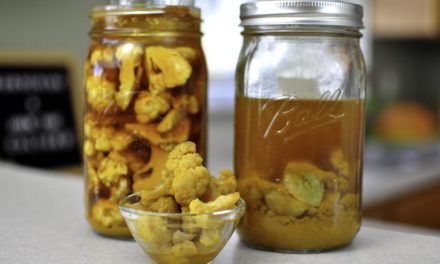Have you ever seen that legendary fruit that looks like a giant dragon egg? It’s the largest fruit in the world that grows on a tree and tastes so amazing. Its flavor is beyond amazing. Today we’re taking you into the adventure of JACKFRUIT. First we’ll teach you how to cut jackfruit. Not only that, we’re taking it a step further and fermenting it into jackfruit Indian chutney! Wow!
Check out the full video and be sure to subscribe to our YouTube channel. It helps us out a ton!
What Is Jackfruit?
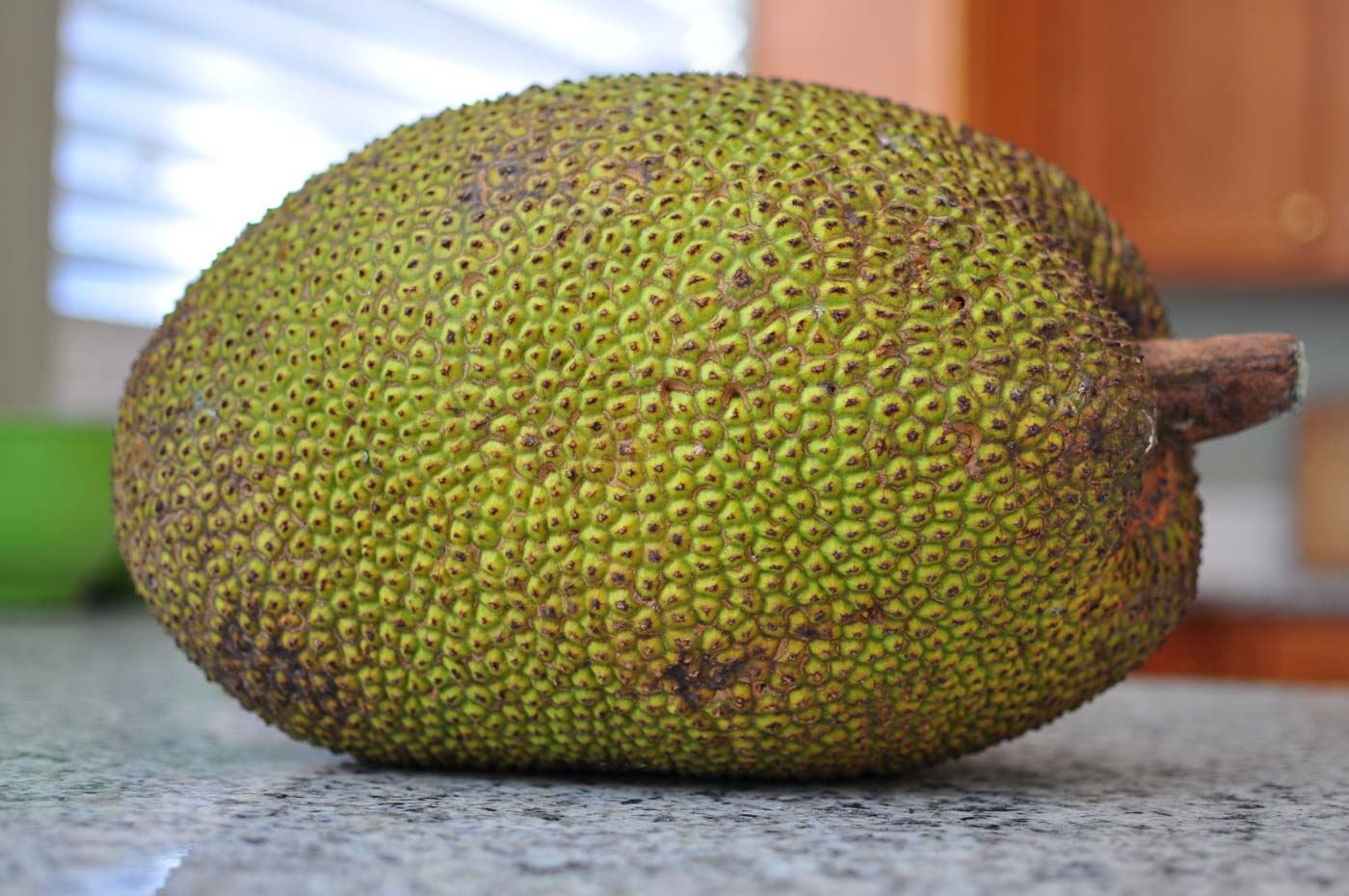
Jackfruit is a tropical fruit that grows on a tree called the jack tree. The tree produces jackfruit that can weigh up to an amazing one hundred pounds! Just imagine a giant watermelon growing on a tree and you start to get the picture. On average the jack tree can produce one to two hundred of these fruits a year and on average they weigh in at about ten to twenty five pounds.
What does jackfruit taste like?
Oh it’s heavenly. There are three main parts to fresh jackfruit that are edible. A giant jackfruit consists of the sweet fruit, the stringy harder flesh in between the fruits, and the large starchy seeds. All three are edible and have different flavors and textures.
Jackfruit Fruit
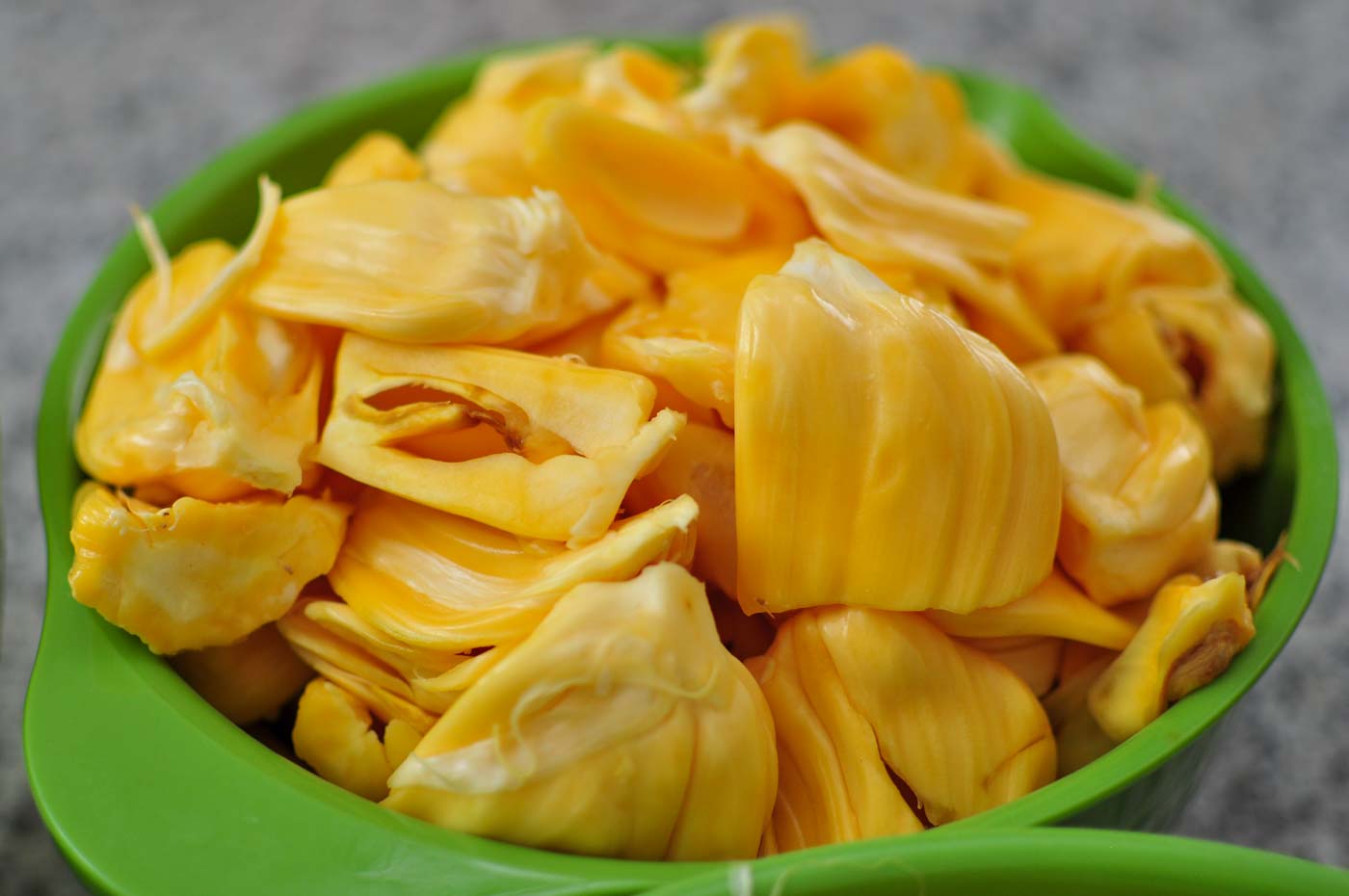
These sweet pods are yellow in color and have a flavor that’s out of this world. The flavor can be described as a tropical mix between banana and juicy fruit gum. As soon as you bite into one of the jackfruit fruits, the aroma hits your senses and the texture is a bit of a slight crunch.
Jackfruit Flesh or Green Jackfruit Meat
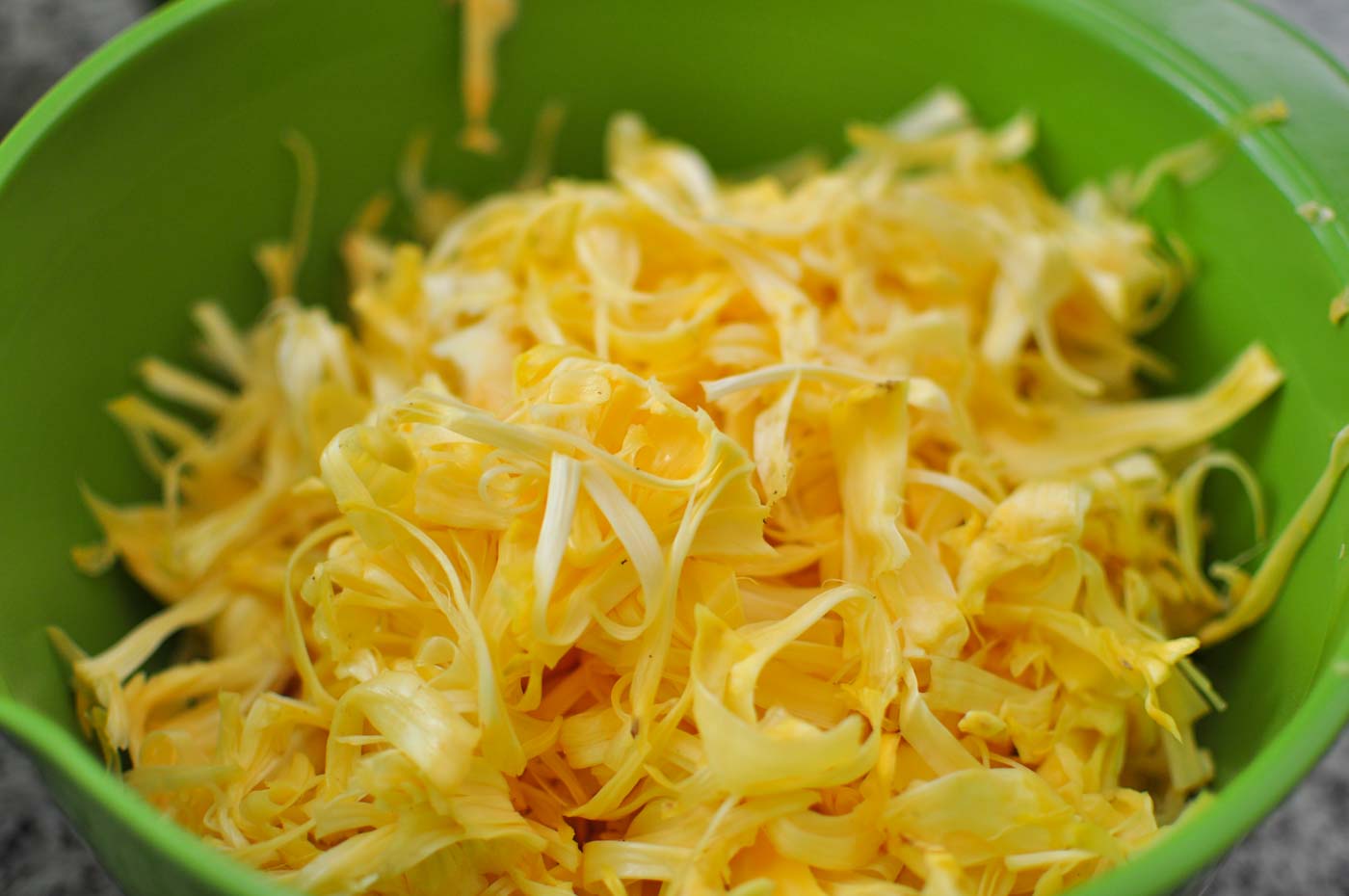
Holding the sweet pods in place is a mass of stringy jackfruit meat that most people seem to think is inedible, but this would be a terrible mistake! These stringy bits of flesh are a little tough and slightly flavorless almost akin to chewing bubblegum without a flavor. Another name for this part of the fruit would be green jackfruit. You can easily find canned green jackfruit at Trader Joe’s. Green jackfruit shines best cooked into pulled pork jackfruit or more simply pulled jackfruit sandwiches. When cutting a jackfruit, most people throw this part away!
Jackfruit Seeds

Inside the sweet pods are very large jackfruit seeds being held by a thin membrane. These seeds are also totally edible when cooked! Cooking jackfruit seeds is done by roasting or boiling for about thirty minutes until soft. The flavor of jackfruit seeds is more potato-like since it’s so starchy. When roasted, it’s similar to chestnuts but not quite as good. When jackfruit seeds are boiled, they can be used more like potatoes. You can even make jackfruit hummus with the seeds!
Picking a Ripe Jackfruit
You can tell a green jackfruit from a ripe jackfruit by a few clues.
- Color – An unripe jackfruit will be very green all over and a ripe jackfruit will start having dark spots.
- Feel – A jackfruit is ready to eat if you press on the outside and it has a slight give.
- Smell – The jackfruit smell is strong and heavenly when ripe. Lean in and you’ll smell the jackfruit giving off a scent that smells similar to bubble gum or candy.
An overripe jackfruit smells strong and begins to smell fermented. It also gets dark all over and quickly develops mold so when it’s ripe, cut it open quickly or put it in the fridge. Once a jackfruit is ripe, it goes bad fast!
How to Cut Jackfruit
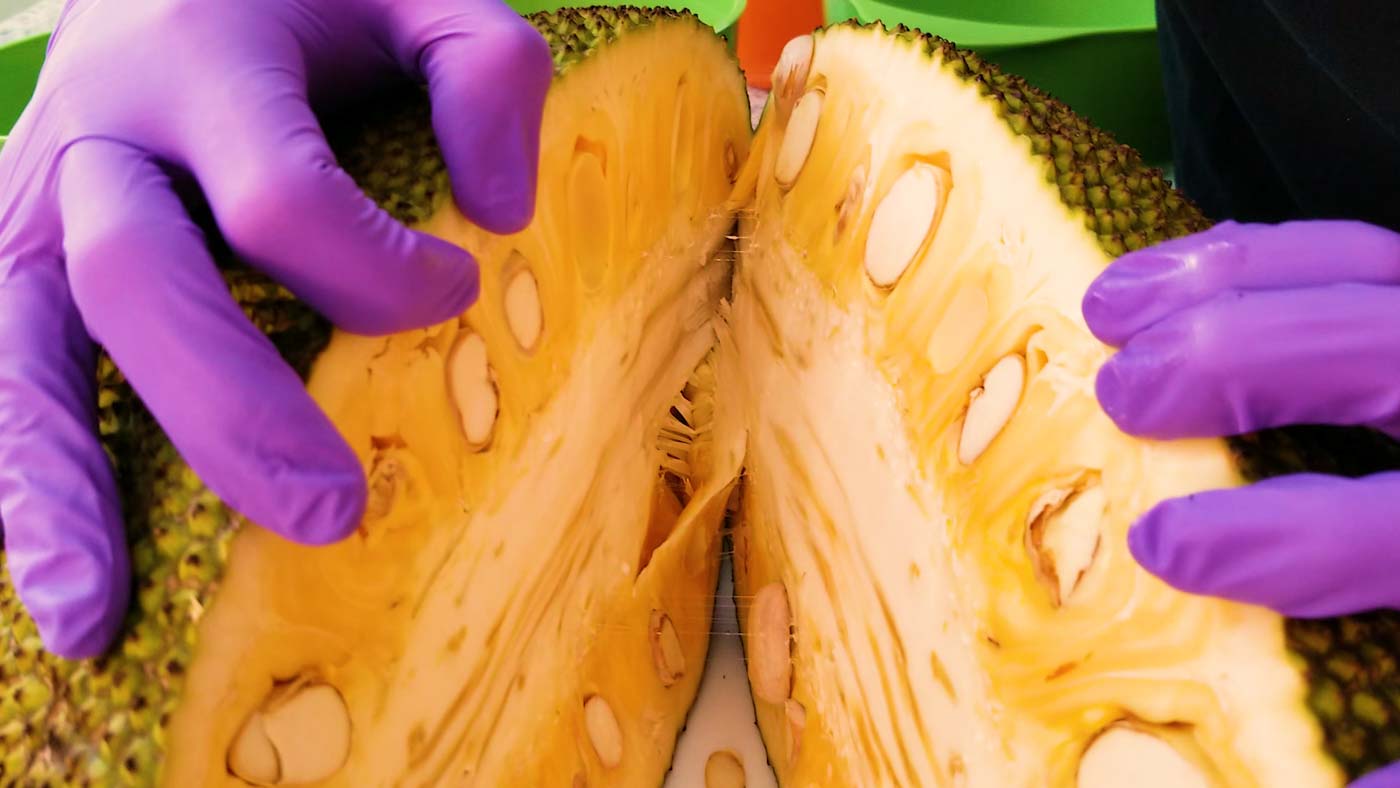
Now onto the adventurous but messy part. Cutting a jackfruit is quite a process to say the least! A twenty pound jackfruit usually takes us about an hour or more but depending on the size it could take longer. Imagine cutting a jackfruit that’s one hundred pounds! That might take an afternoon. Grab three large bowls to separate the different parts of the jackfruit. You’ll probably want another large bowl for waste.
There are a few different ways to easily cut jackfruit. You can cut open jackfruit using the spiral method for a nice presentation, but we like to cut it up in quarters to use every bit of the fruit.
The hard center core of a jackfruit has a white sap that’s extremely sticky! Think industrial strength glue or liquid bubble gum paste. The sap also runs slightly throughout the jackfruit in the stringy flesh part so your first step is to take precaution. We coat our knife with a bit of coconut oil and also use gloves coated in oil. Also, don’t use expensive knives because the sap is very hard to get off.
Cut the jackfruit in half lengthwise and then cut it lengthwise again so you now have four quarters.
The hard center core is now exposed so cut the core out to be thrown away or composted.

At this point, a nice trick is to pick up one of the jackfruit quarters and bend it backwards while rolling it back and forth in the air to loosen up the fruit and flesh to make it easier to remove.
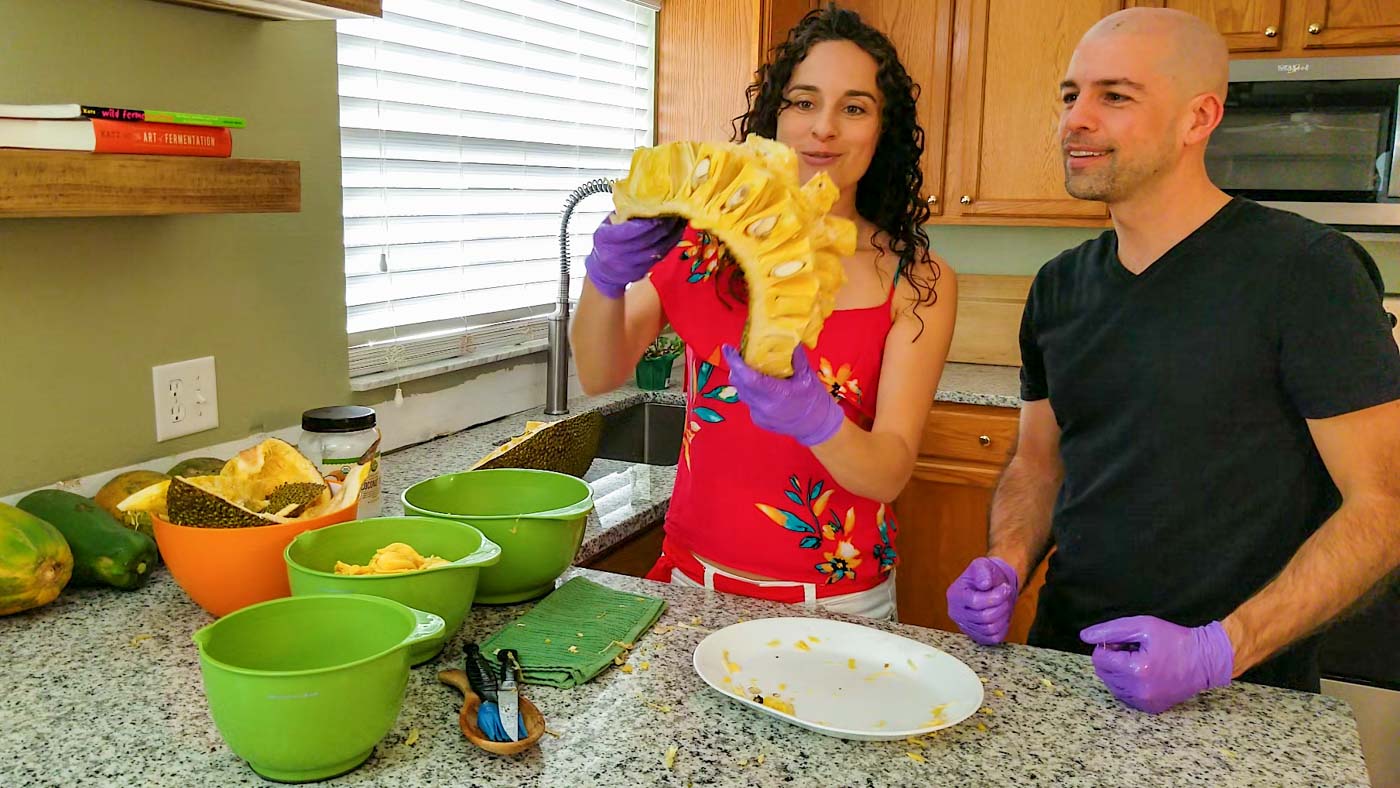
Now that the jackfruit flesh is loosened up, it’s time to dig in with your hands or gloves coated in oil. Start popping out the sweet yellow fruit pods and open to remove the large jackfruit seeds inside.

As you continue removing the pods, you might need to use your knife to cut some of the flesh away to get access to the rest of the pods.
When all of the pods are removed, grab the stringy fleshy part and either pull or cut them from the thick peel of the jackfruit. Continue the same way on the other quarters and you’ll end up with three large bowls of food to use along with another large bowl to compost or throw away.
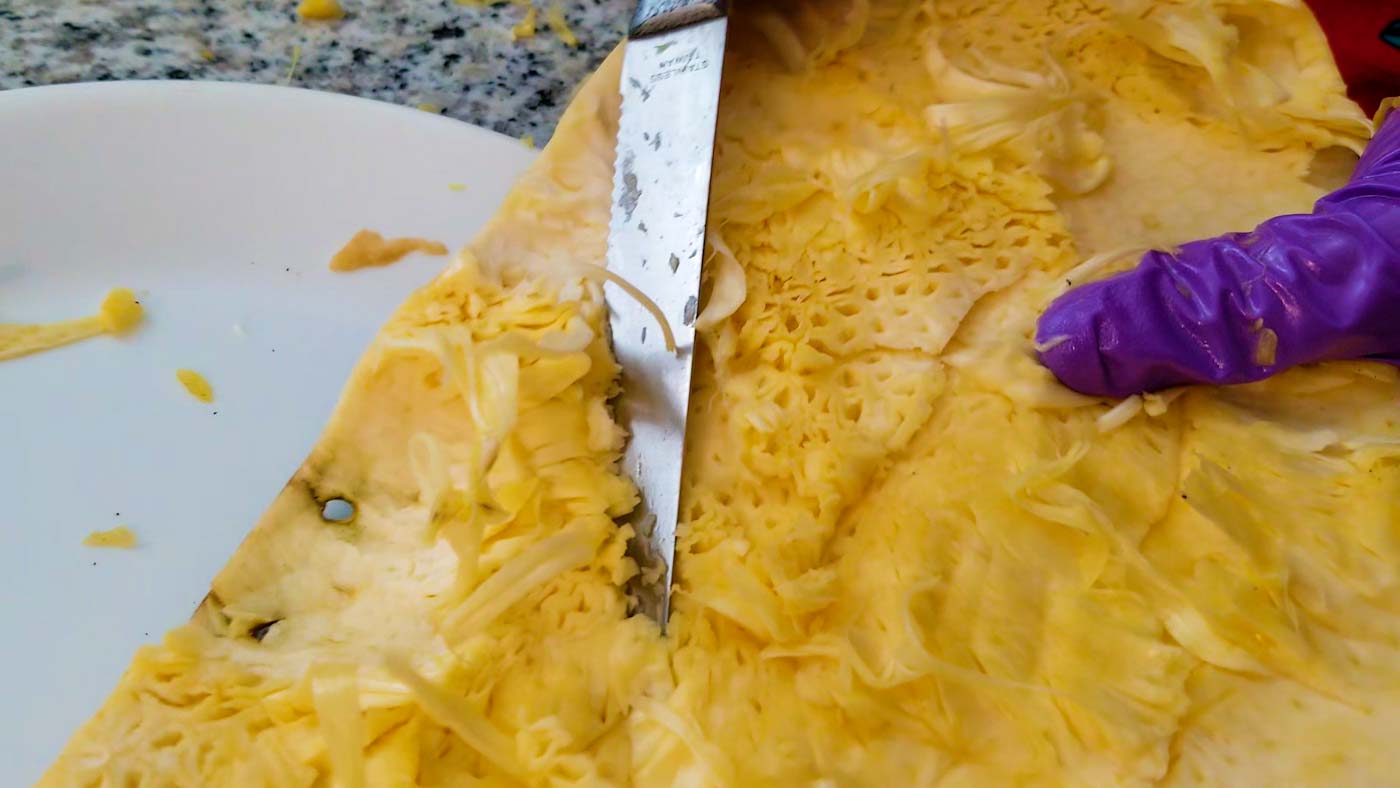
It’s amazing the amount of food you get from a jackfruit! We weighed the fruit, flesh, and seeds and then subtracted the waste and bowls and here’s the amount of food we got:
JACKFRUIT FOOD STATS
Whole Jackfruit 18.27 pounds | 292.32 oz
42.2% Fruit ~7.7 pounds | 123.47 oz
(including ~1 pound or 16.87 oz we ate while cutting! 😋)
8.5% Stringy Flesh ~1.6 pounds | 24.8 oz
11.3% Seeds ~2.1 pounds | 33.15 oz
38% Waste ~6.9 pounds |110.9 oz
———————————————–
Total Harvested Food (62%) ~11.3 pounds | 181.42 oz
This jackfruit happened to be heavy in fruit but sometimes we get a lot more of the green jackfruit that we make into vegan pulled pork sandwiches!
Jackfruit is so good to eat by itself as fruit and green jackfruit meat is so incredible as pulled jackfruit sandwiches so it was tough to think of a ferment that would make it even better than it already is, but we had a good idea in mind.
We decided to ferment the fruit portion into jackfruit chutney! Check out the recipe below.
Indian Jackfruit Chutney Recipe
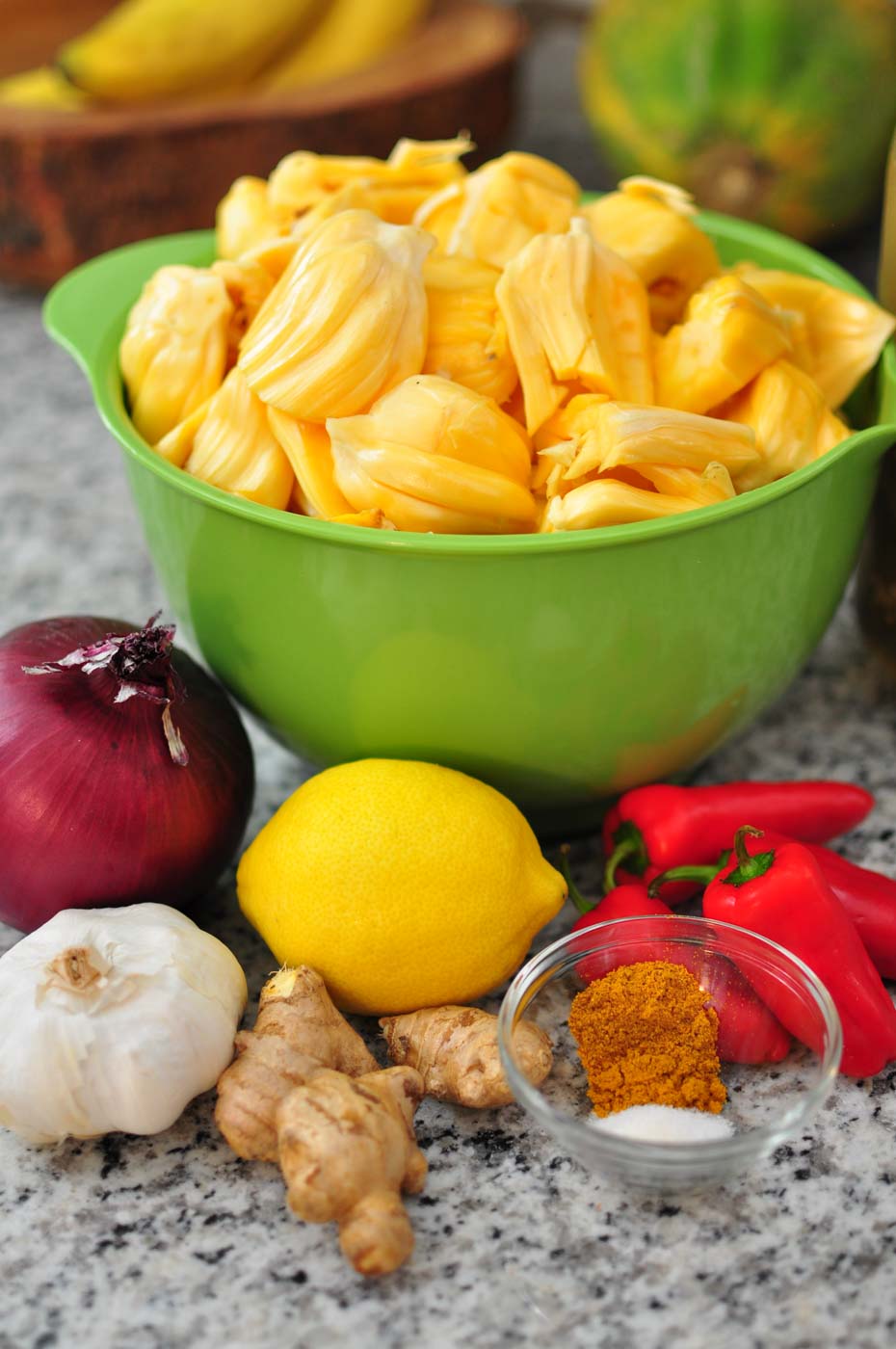
Makes 1 quart
This sweet, onion, and garlic flavored chutney is so good on sausage dogs, as relish, or enjoyed with Indian dishes where you’d typically enjoy onion or mango chutney.
Equipment:
- 1 quart mason jar
- Fermentation airlock – we love these silicone fermentation lids
Ingredients:
- 3 cups jackfruit fruit, chopped
- ½ red onion, minced or chopped
- 2 garlic cloves, minced
- 1 T fresh ginger minced
- 4 small sweet peppers, sliced
- 2 T lemon juice
- 1 tsp sea salt
- 1 tsp curry powder
- 3 T starter culture – we used the brine from our fermented jalapeno hot sauce recipe
Add all of the ingredients listed above to a large bowl and stir to combine.
Stir the mixture well so that the starter culture is evenly distributed throughout. Normally we like to make ferments from scratch but we want this chutney quickly and also want to make sure we get the results we’re looking for so we’re using a starter culture.
By using a starter culture, this gives your ferment a jump start on the fermentation process. It also ensures that you’re less likely to get mold because you’re already introducing an established culture to get in and take over quickly. Jackfruit is so precious to us, we don’t want to take the chance of getting mold.
Transfer the fresh jackfruit chutney mixture to a one quart mason jar.

Pack the mixture down into the jar with a spoon or a handy wooden sauerkraut pounder to get all of the air out.
Put a lid or cover on it and if you want extra insurance, we like to add a fermentation lid to act as an airlock to seal out the oxygen.
Leave sitting at room temperature for two to four days. You don’t have to stir.

What to Expect During Fermentation
After 24 hours, you’ll probably start seeing the smallest bit of air bubbles beginning to form in the packed jar of indian chutney. This is your starter culture breaking down the sugars and releasing gas as the bacteria and yeast feast on all of that sugar.
After 2-4 days, you’ll notice a lot more bubbles and since the cell walls begin to rupture, the liquid from the jackfruit and the other ingredients will leak out and start puddling on the bottom of the jar. This will push all of the other ingredients up the jar leaving a lot of liquid on the bottom. The air bubbles will also fill the mixture with a lot of extra air pockets.
After 2 days, taste your chutney and decide if it’s the flavor and texture to your liking. If it’s good to go, mix and pack everything back down to the bottom of the jar and transfer to the refrigerator. If it’s not ready, ferment for a day or two more and taste again. It should stay good in the refrigerator for quite a while, but eat it sooner for a better flavor!
Jackfruit – The Miracle Food
The incredible jackfruit can be used in so many ways and Lacto-Fermented Indian Jackfruit Chutney is only one of them! We hope you’ve loved this recipe and all of your ferments are bubbly away.
Let us know in the comments below if you make this recipe or if you try another variation involving jackfruit. We’re always on the lookout for great ideas. Leave us a comment below and don’t forget to subscribe to our YouTube channel!

